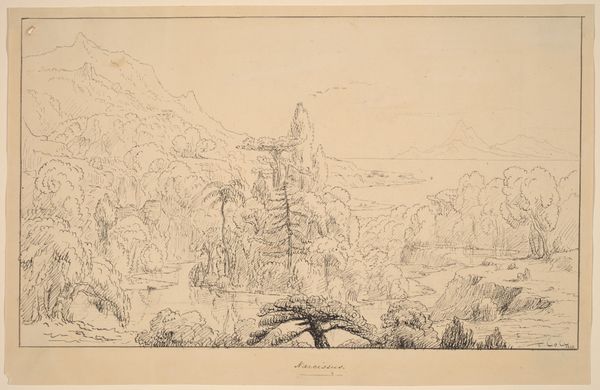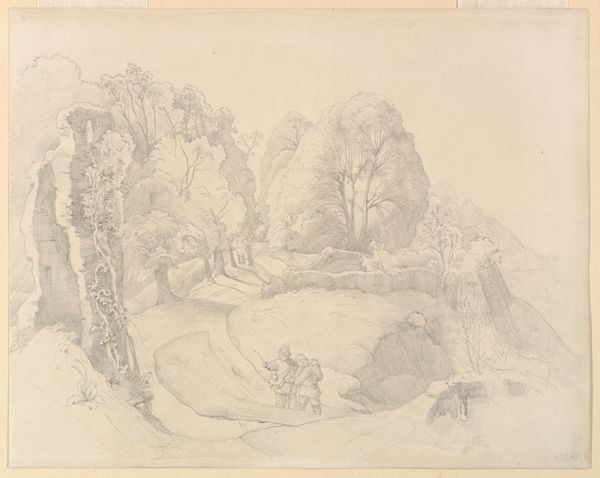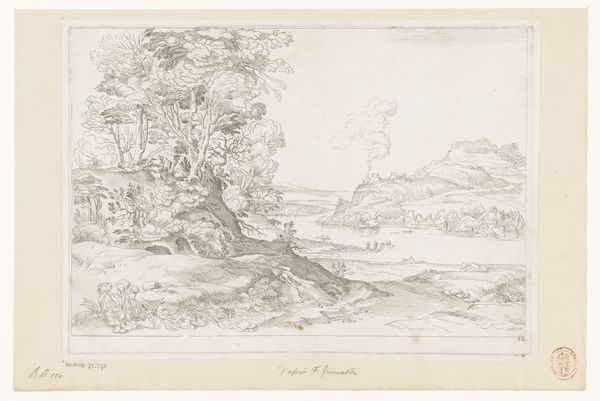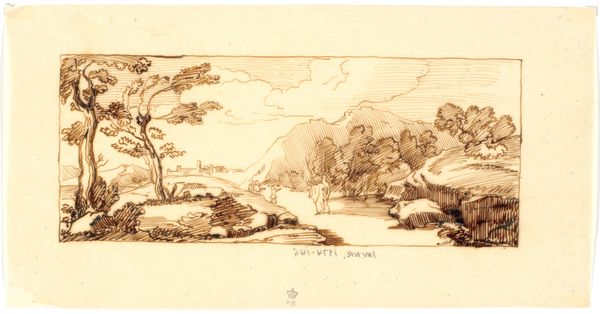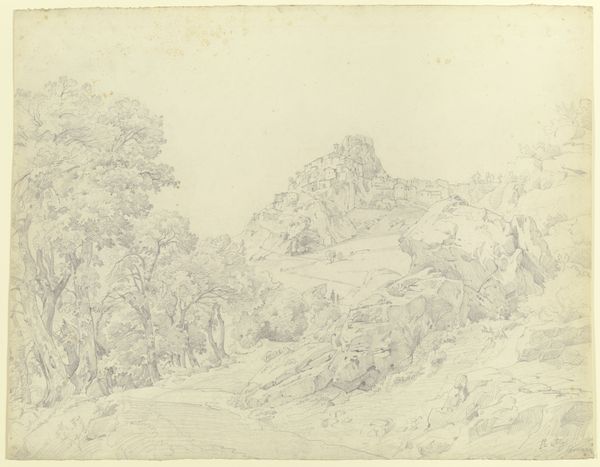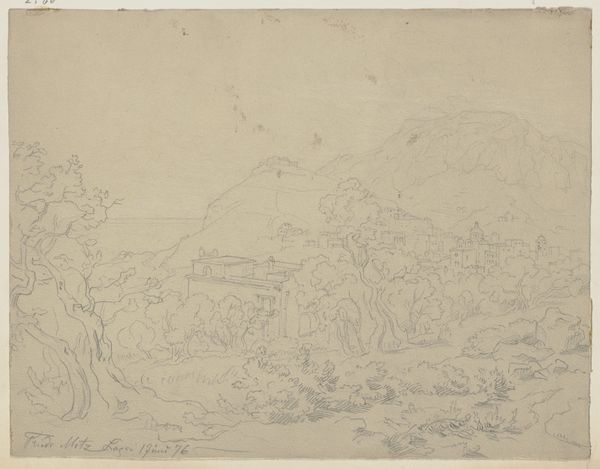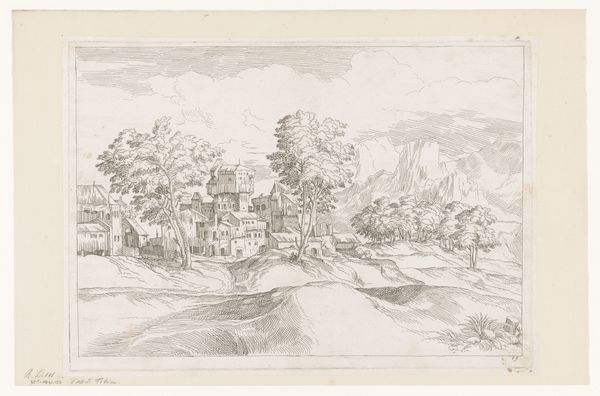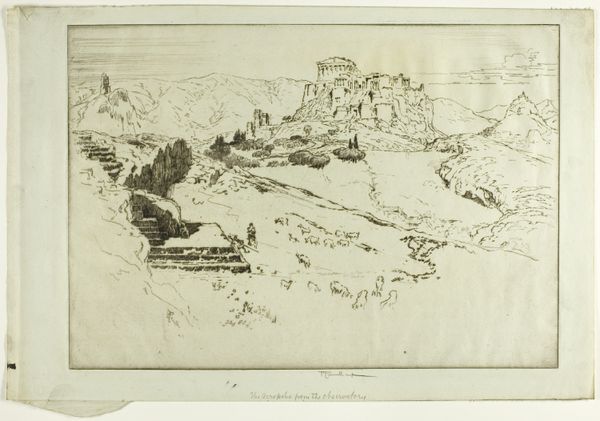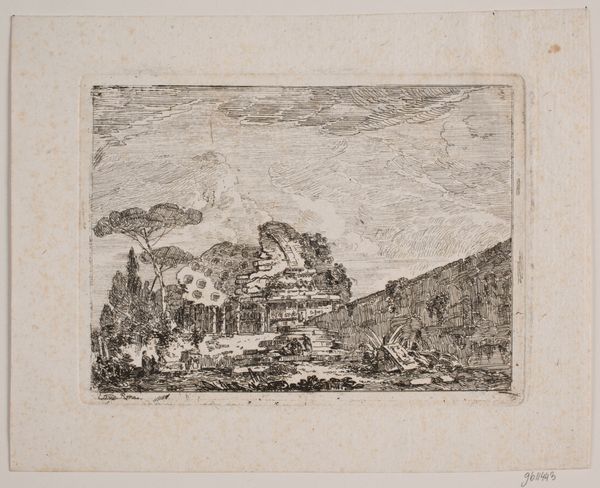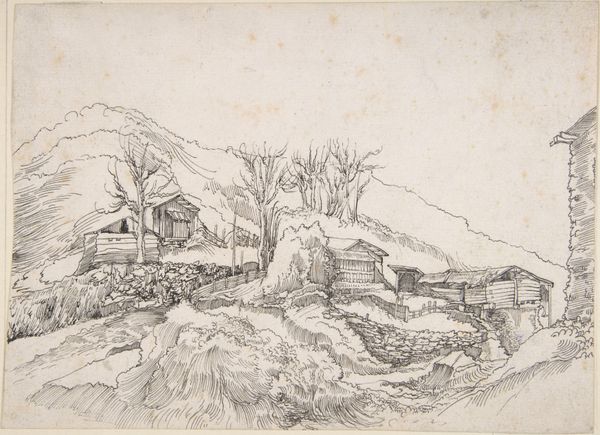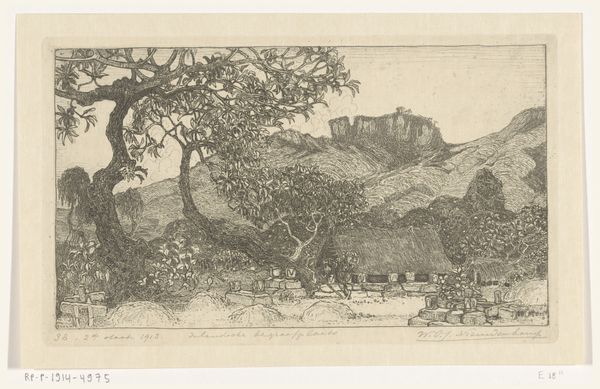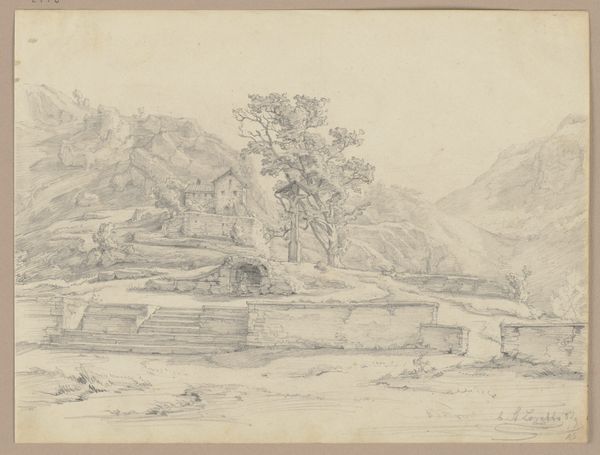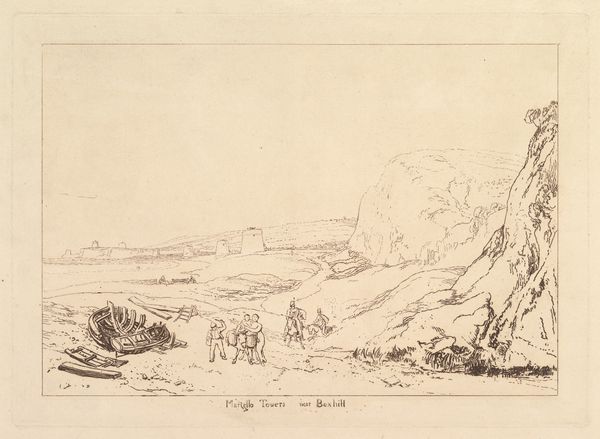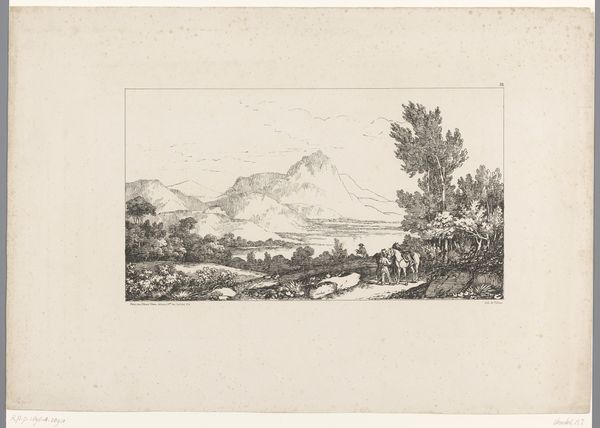
drawing, print, etching, dry-media
#
drawing
#
ink drawing
# print
#
etching
#
landscape
#
dry-media
Dimensions: Sheet: 13 7/16 × 18 7/8 in. (34.2 × 48 cm) Plate: 11 × 15 13/16 in. (28 × 40.2 cm)
Copyright: Public Domain
Curator: What strikes me first is how quiet it feels. Looking at "Scotch Firs, Inveroran," a landscape etching by Sir Francis Seymour Haden from 1873, one immediately feels a sense of peaceful solitude. The stark monochromatic palette only emphasizes this stillness. Editor: Quietude can also mean complicity, right? Given Haden’s privileged position as a surgeon and artist, it’s fair to ask what realities are omitted here, and whose access to that landscape is prioritized. Curator: That’s an important consideration. In terms of the symbology of the image, though, these fir trees have deep roots in Scottish history and culture—they are literally iconic. Think of them as symbols of resilience. Editor: I can see that. To me, the sketched mountain looming in the background speaks to a sublime experience but almost too distant and vague to have a real presence. It reinforces a colonial, disconnected gaze onto the land itself. What purpose did the mountain serve, for instance, in a historical context? Curator: Beyond aesthetic composition, you mean? In cultural memory, mountains act as silent witnesses to history, as protectors, holding deep spiritual significance. Their constant presence, generation after generation, embodies permanence. The use of negative space only intensifies its symbolic weight. Editor: The artist’s strategic use of light and shadow definitely evokes emotion. Are those figures walking in the distance on the right? Are there many traces of the area's people? Curator: In the original drypoint, these details become points for contemplation and quiet interaction; and of course, each viewer engages differently, based on the intersectional reality of their lived experience, as you so wisely pointed out. Editor: Art's political and cultural impact lies in how it portrays people in landscapes. It also encourages me to reflect more broadly, about whose stories remain unseen or are intentionally erased in conventional art history. Curator: Yes! And what is remembered instead. Well, for me, the composition of Scotch Firs functions as more than a snapshot. This piece invites us to reflect on how nature—a collection of shared, evolving, and overlapping symbols—both defines and transcends historical periods. Editor: Absolutely. By juxtaposing its visual language alongside our current landscape, perhaps we might promote further dialogue surrounding social structures that perpetuate marginalization.
Comments
No comments
Be the first to comment and join the conversation on the ultimate creative platform.
